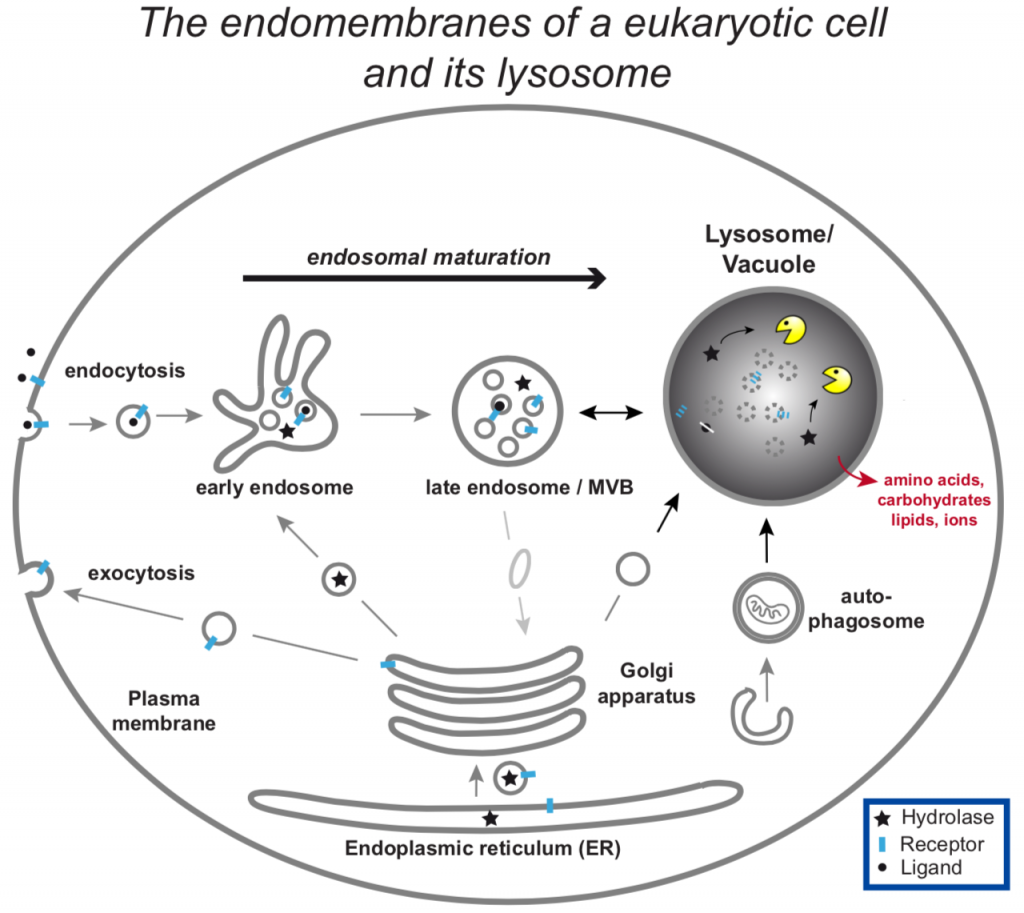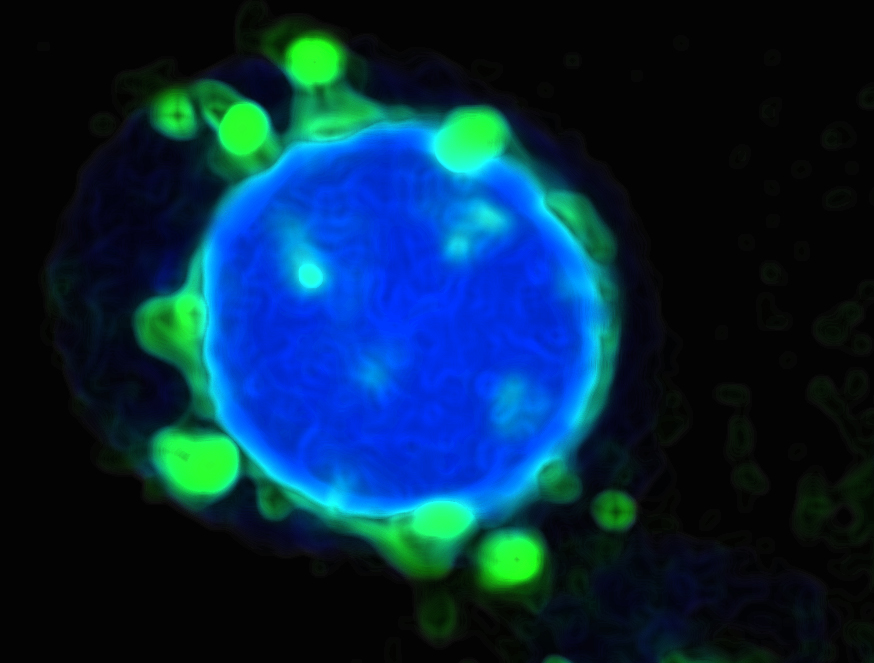The lysosome
– is the most exciting organelle of the eukaryotic cell. It is not just a bag of proteases that degrades lots of proteins and organelles, but is THE major recycling facility of the cell – everything that arrives is chopped into pieces and the monomers (amino acids, carbohydrates, lipids) are reused to build new proteins and organelles.
We use in vivo and in vitro approaches to understand the role of lysosomes in autophagy, endocytosis or growth, and use cellular models like the baker’s yeast or the fruit fly Drosophila to understand its physiology.



